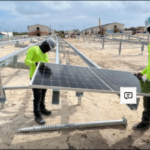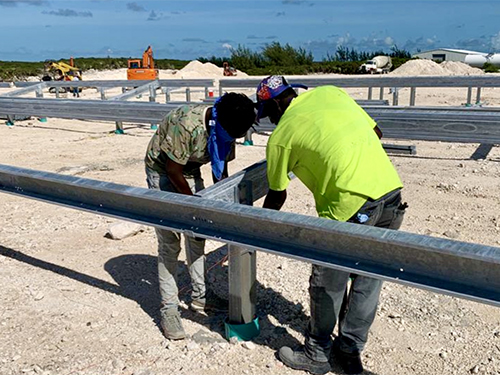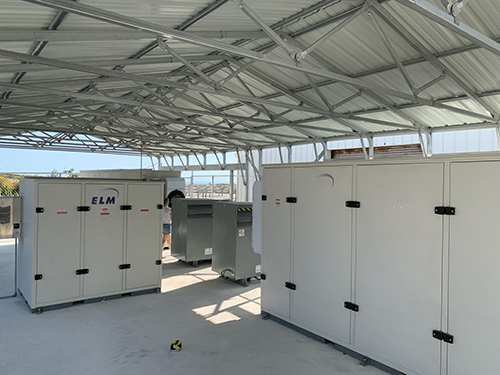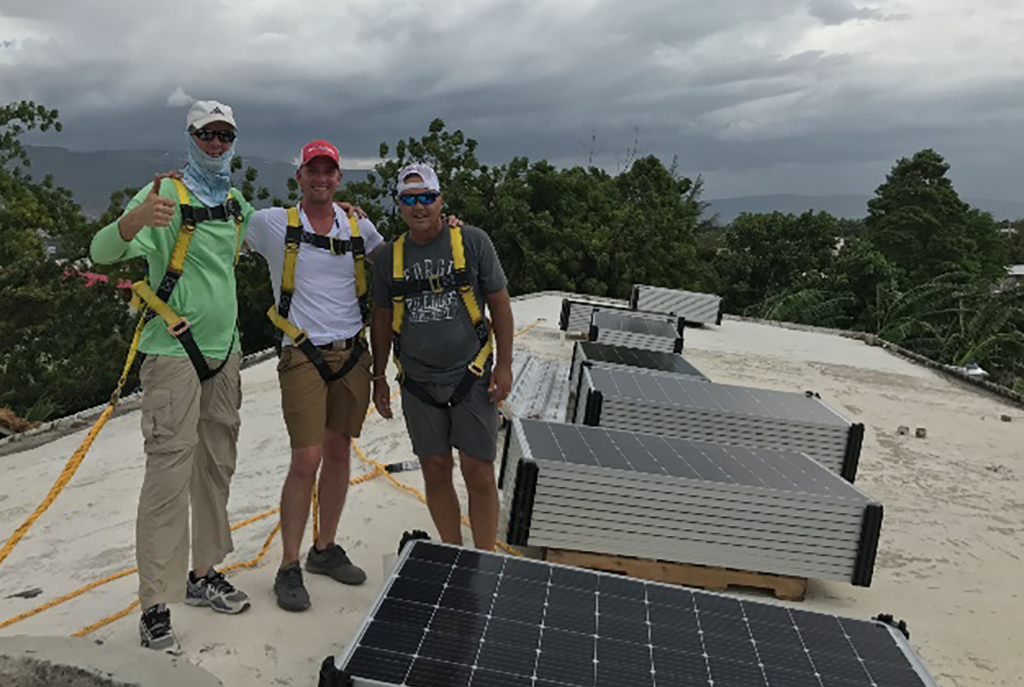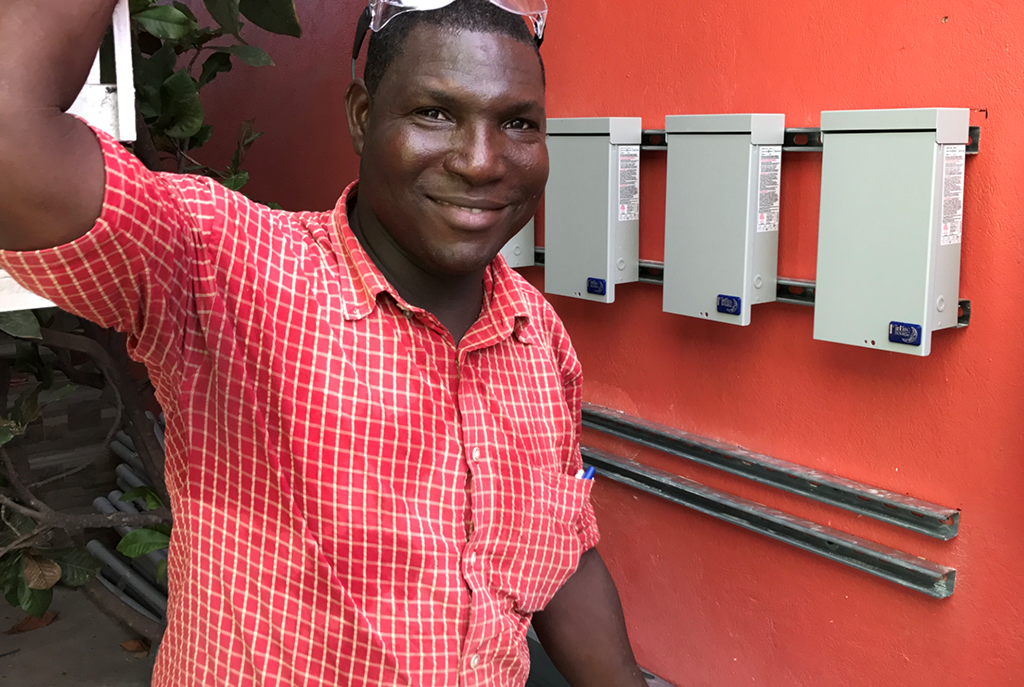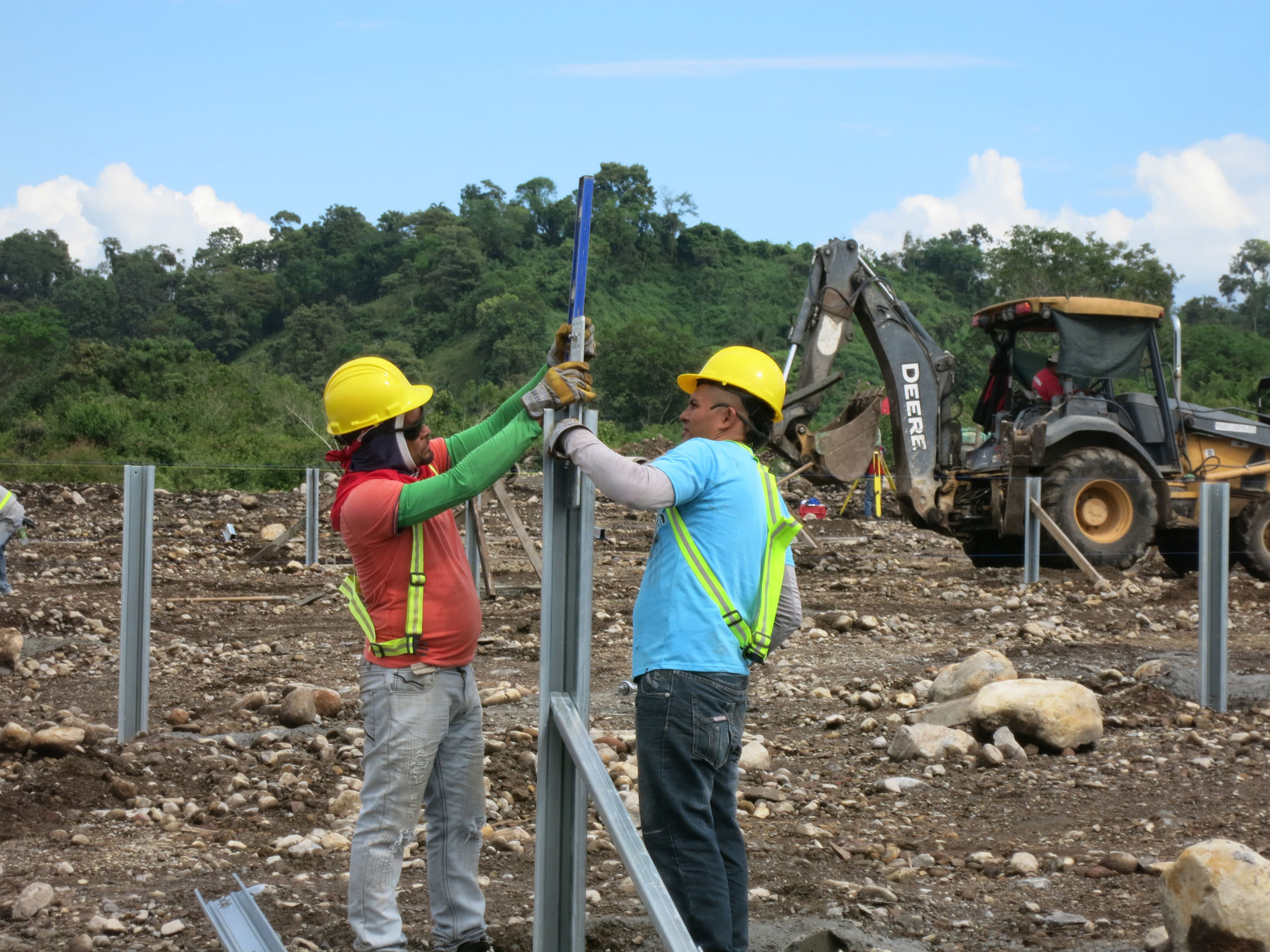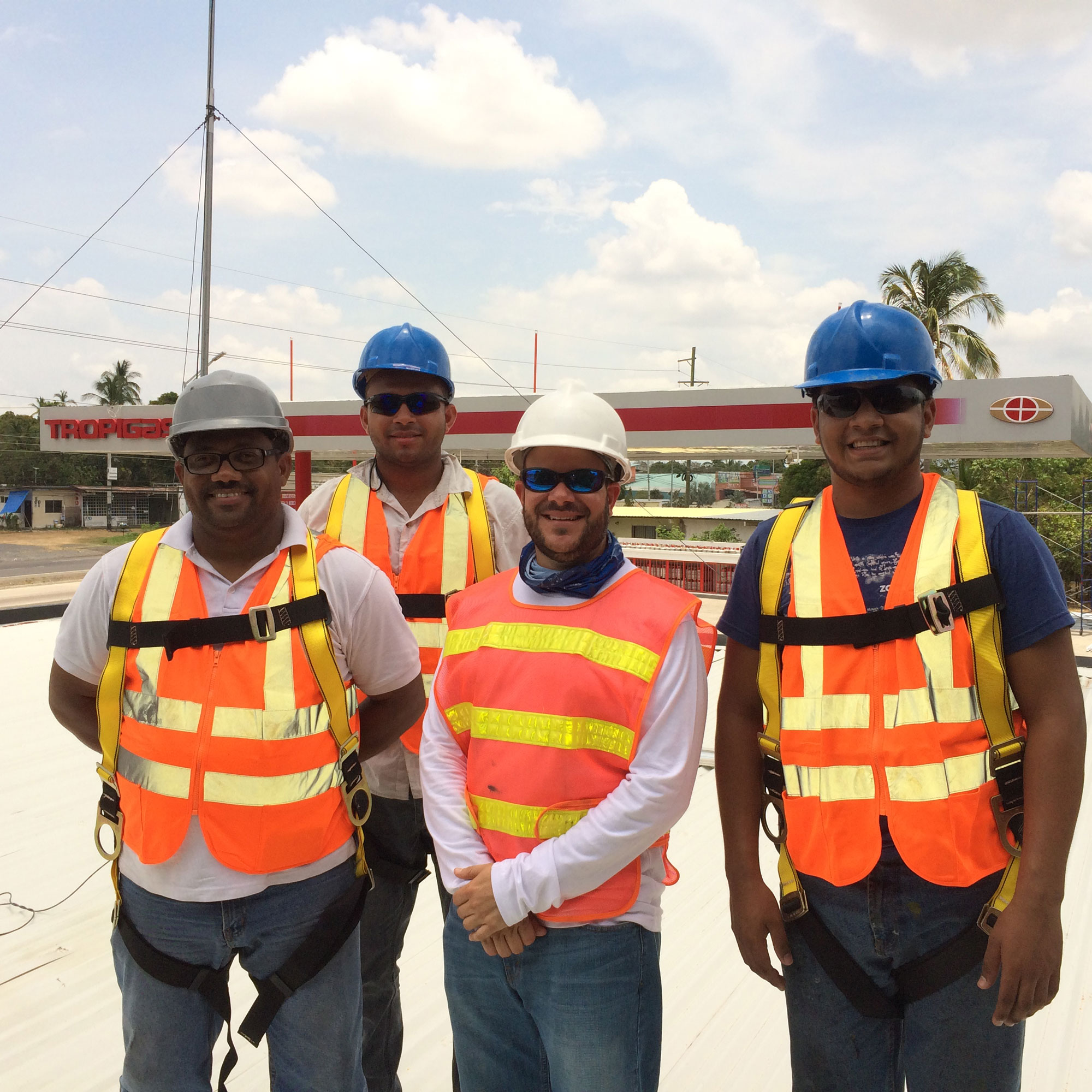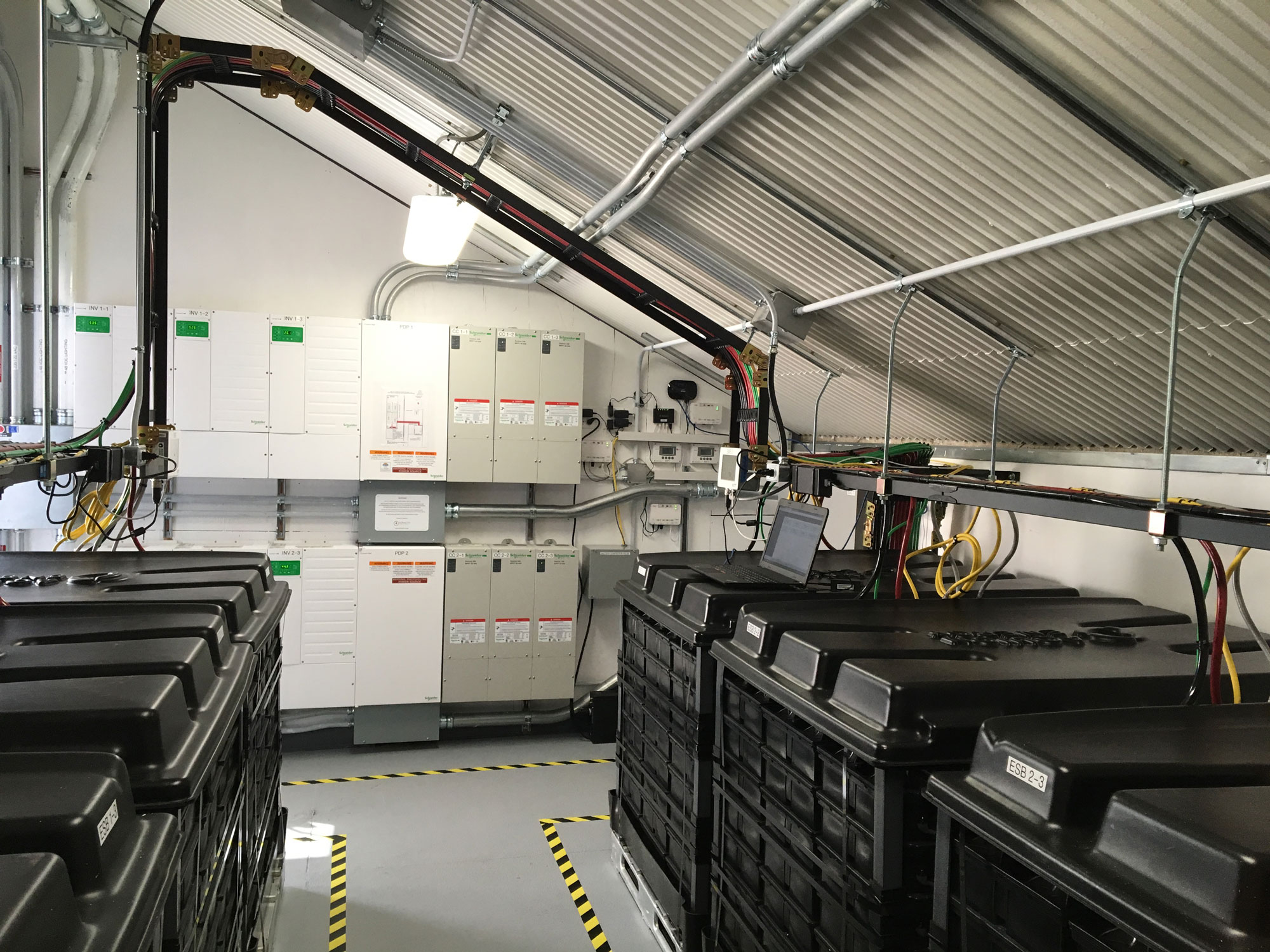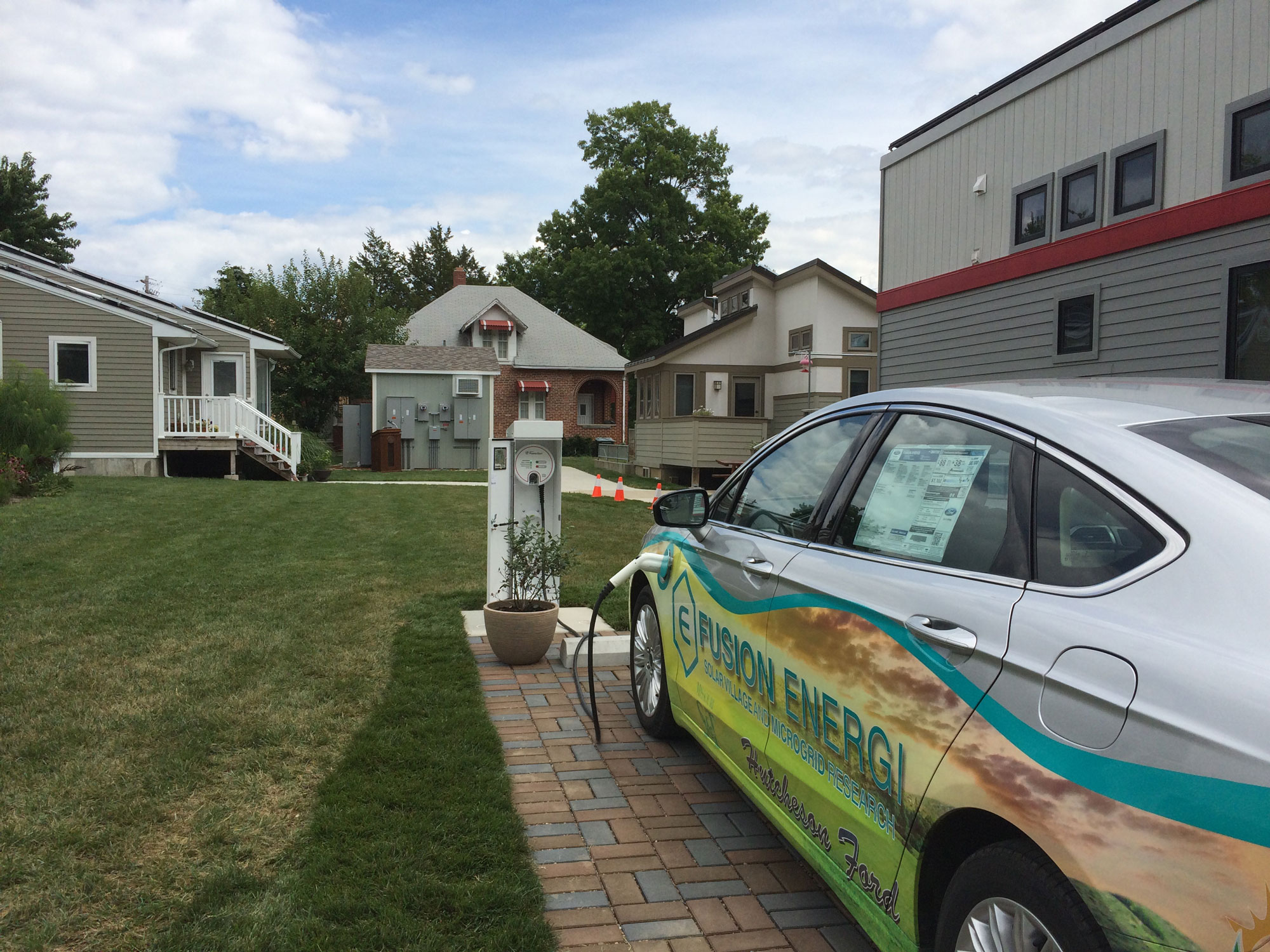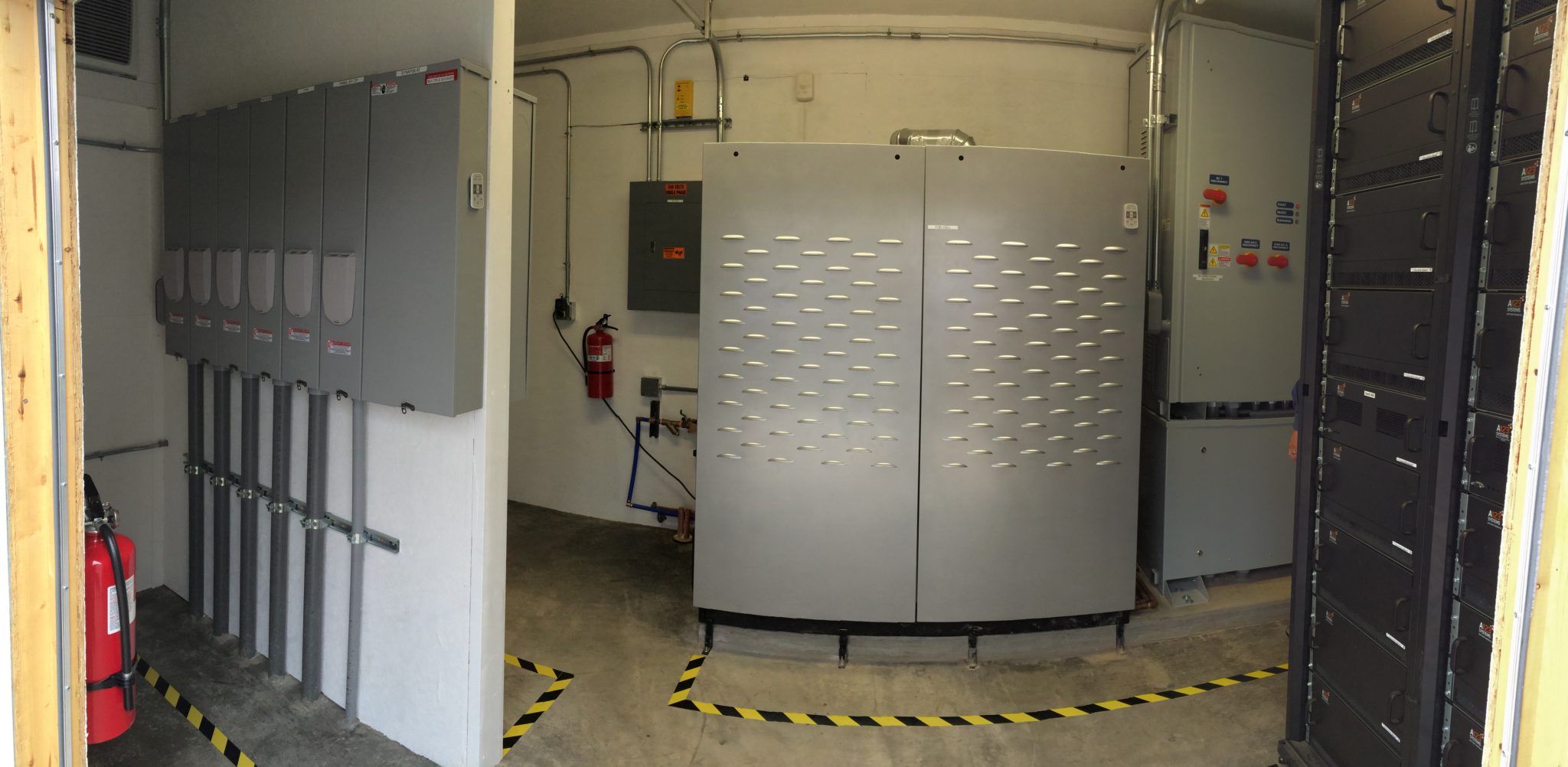Our Portfolio

Here are just a few select case studies from our portfolio. You can find a gallery of project pictures here.
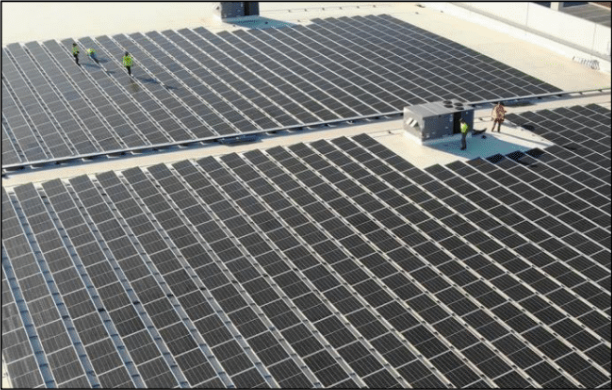
Red Bull

Eastern Caribbean Central Bank Microgrid

Bell Island Microgrid
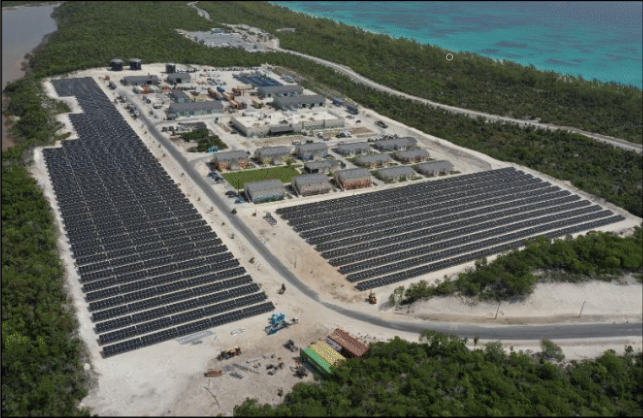
Disney Cruise Lines
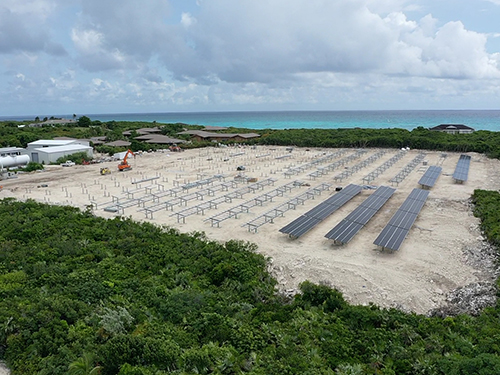
Highbourne Cay Resort

World Bank, Eastern Caribbean

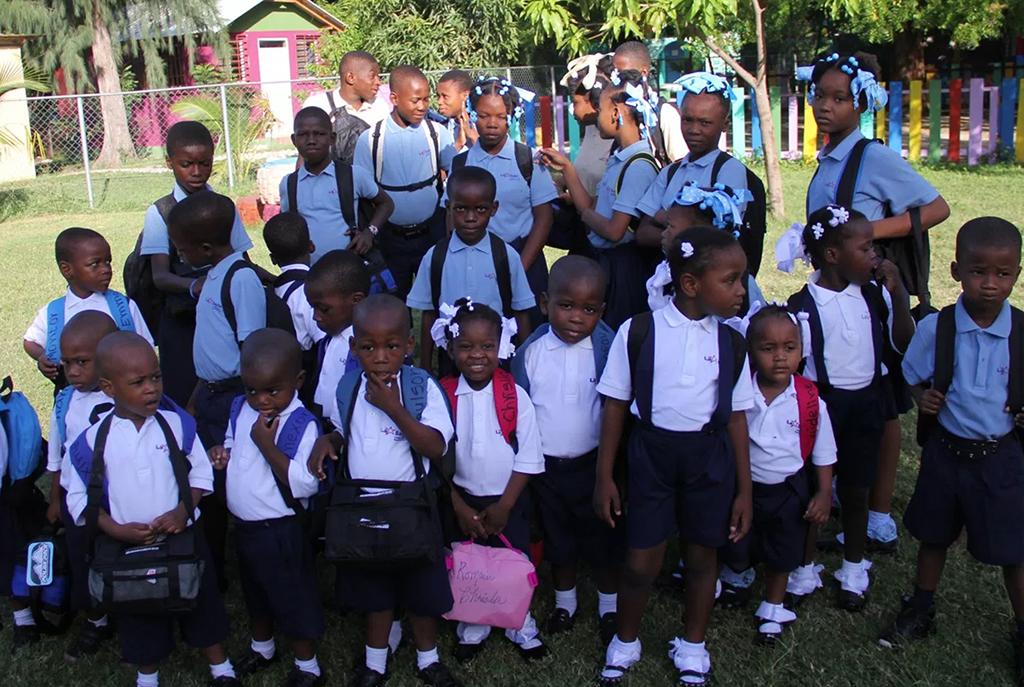
New Life Children’s Home

Tropigas Solar Farm
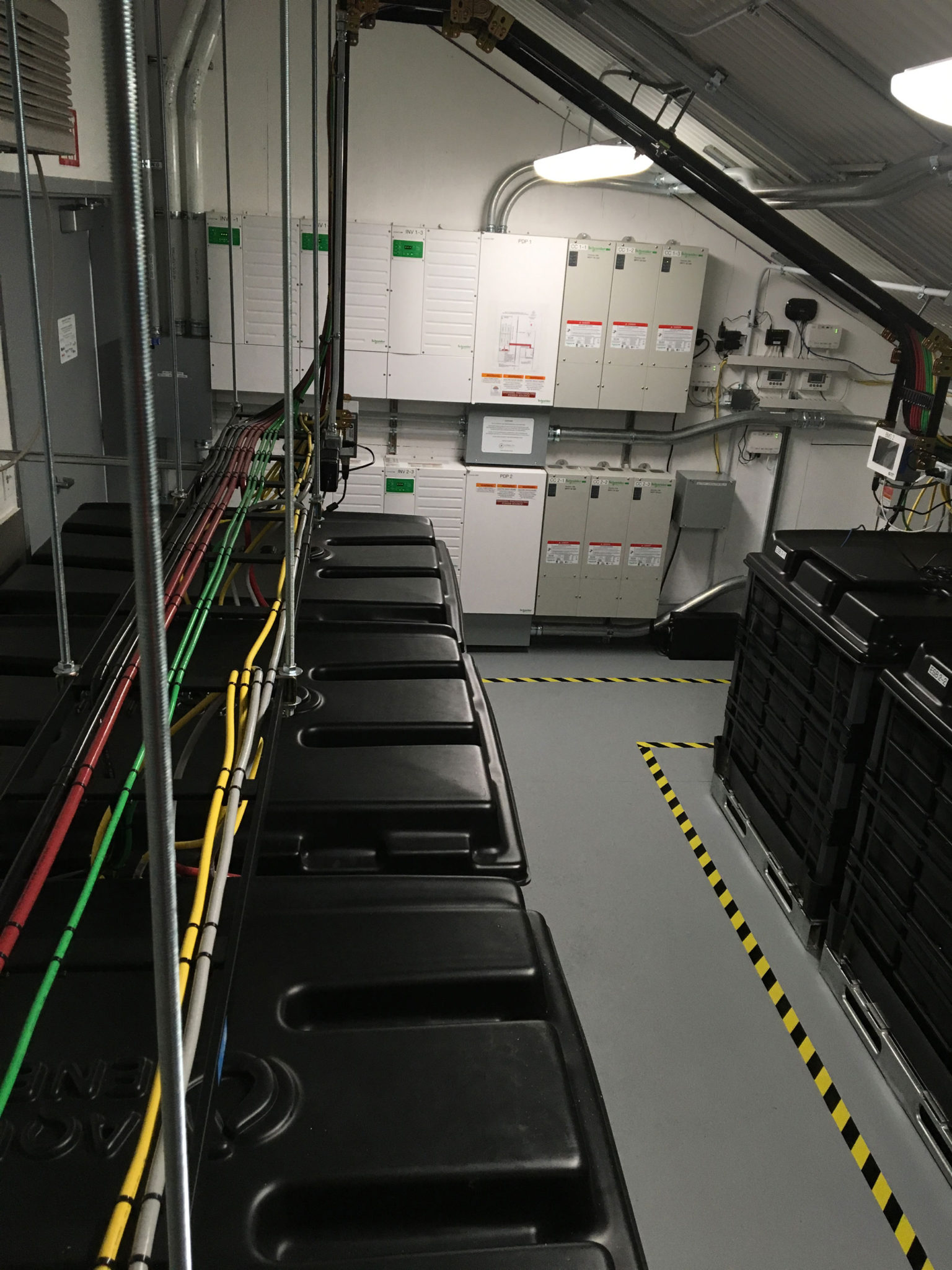
Illinois Institute of Technology
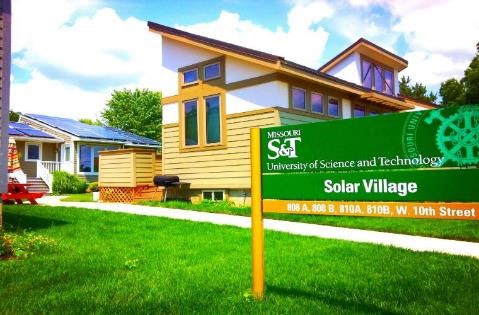
Missouri University of Science & Technology
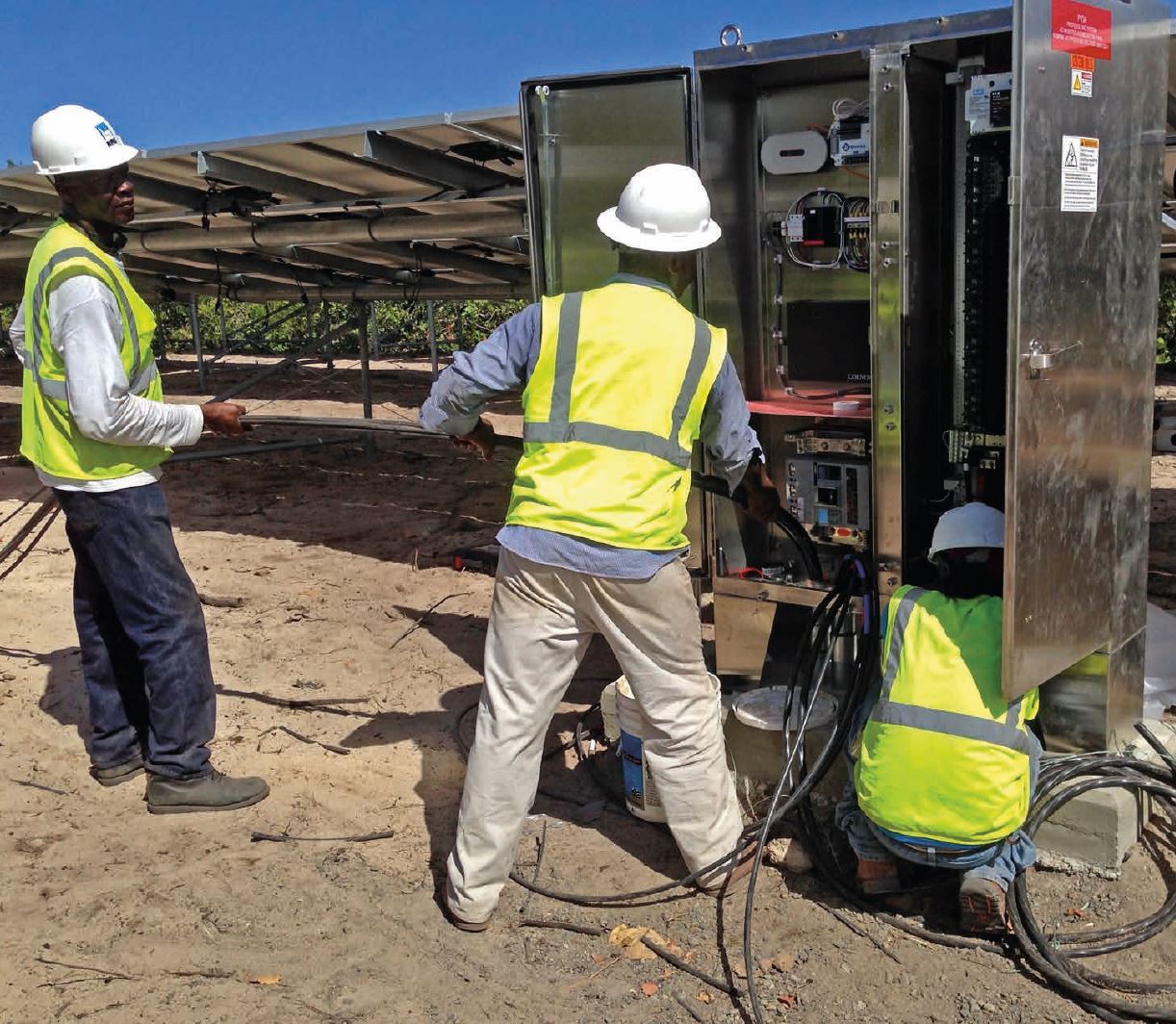
Cooper Island Beach Club
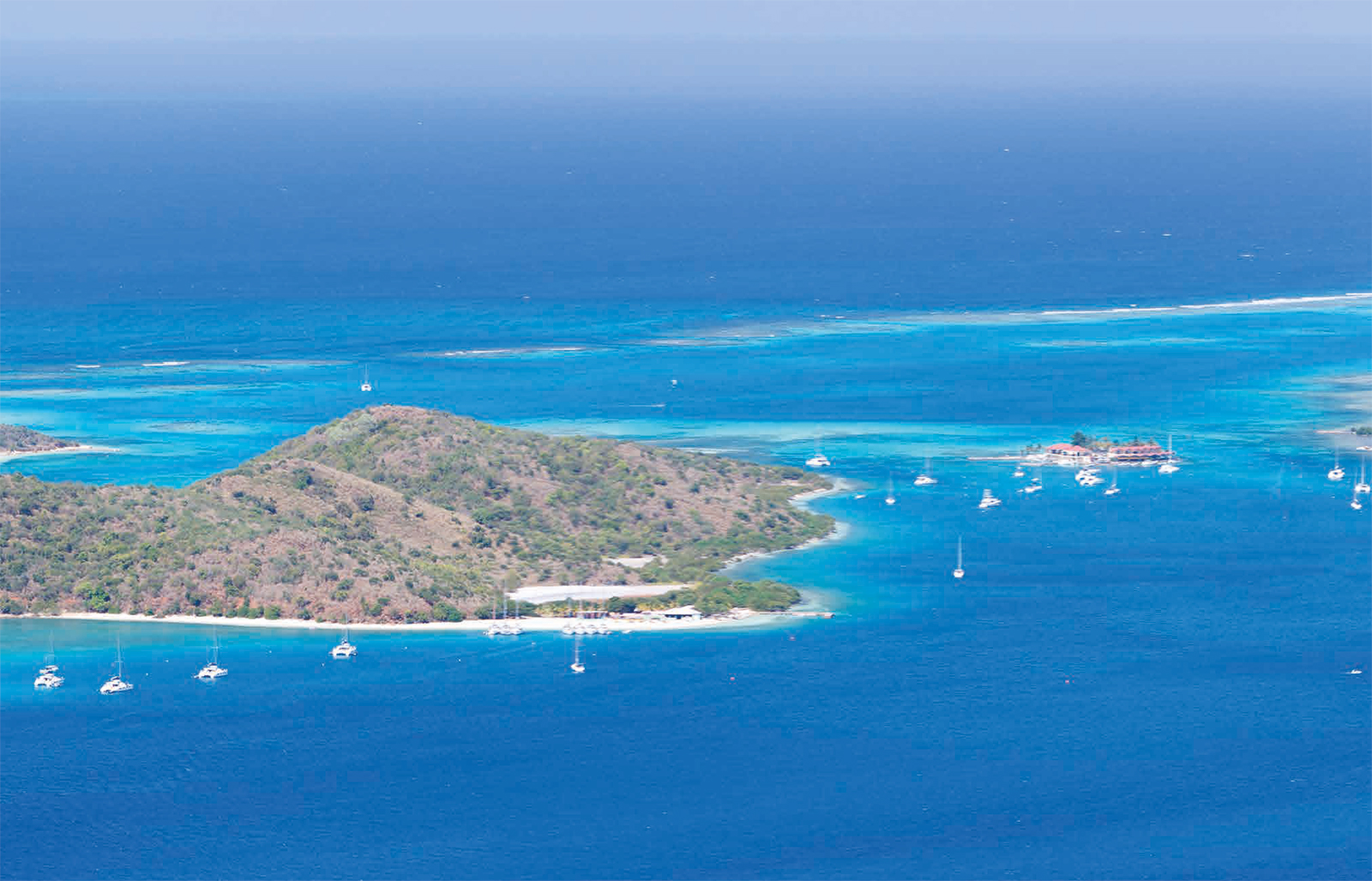
Oil Nut Bay
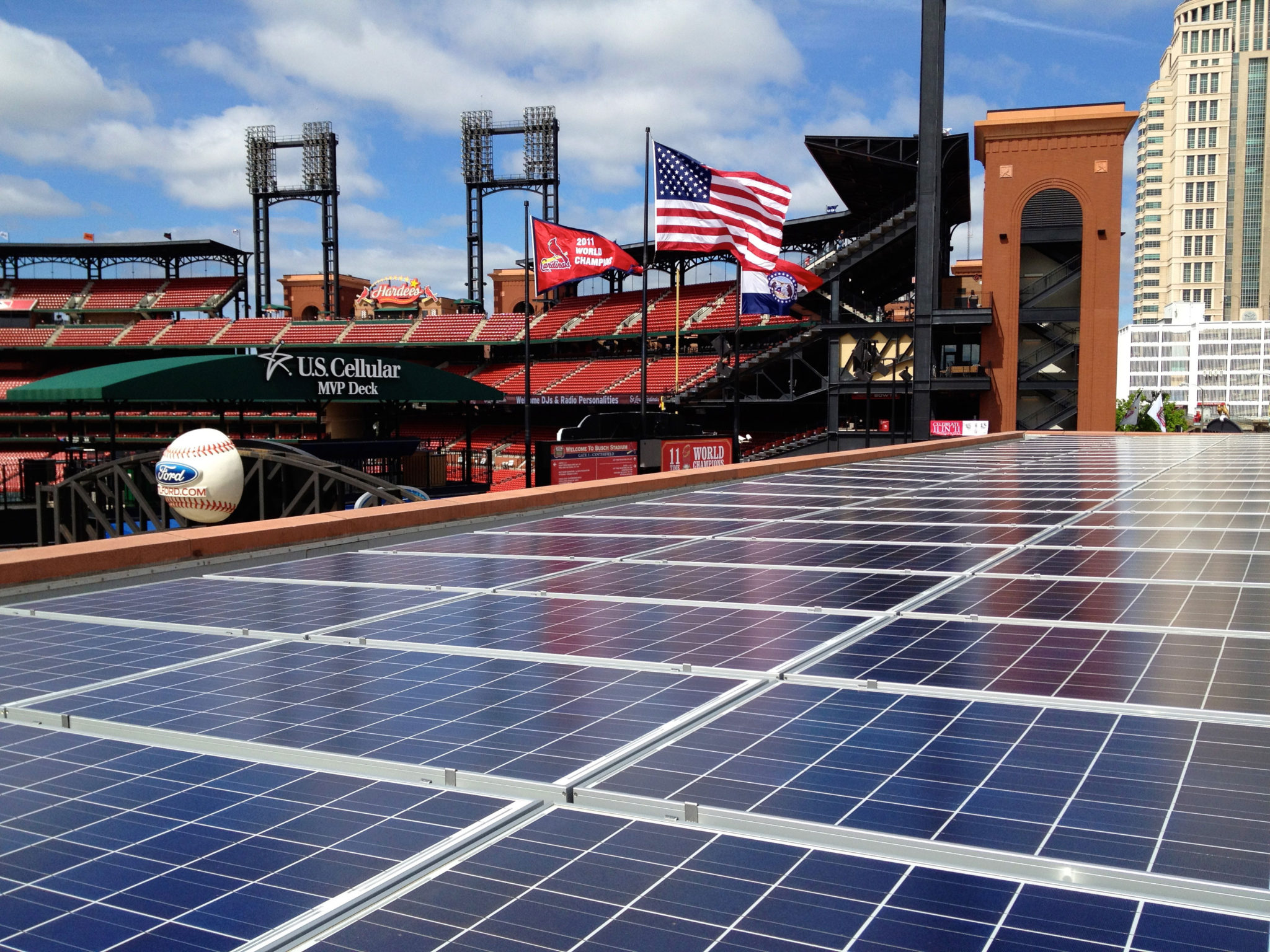
Busch Stadium
-

Red Bull
Client: Red Bull NA; Phoenix, AZ
Scope: 6.2 MW roof - mounted PV
Completed: 1Q2013This was new construction for Red Bull, aiming to achieve Net Zero certification for the building. The PV system exports significant energy to the grid but achieves the net-zero goal over an annual period. The system was engineered to allow addition of energy storage without significant business interruption should that option become more cost effective. The PV is interconnected across three metered services. We sized the sub - array capacity to not exceed the utility export limitations.
-

Eastern Caribbean Central Bank Microgrid
Client: Eastern Caribbean Central Bank Microgrid; St Kitts – CREF Microgrid of the Year, 2023
Scope: 1.2 MW grid-tied carport PV + 2.6 MWh battery plant
Completed: 2018 to 2022This project is the keystone in the ECCB’s strategy to achieve carbon neutrality by 2030. This project offsets about 80% of the bank’s annual energy consumption, and energy efficiency will offset the remainder. In addition to the substantial energy production, the carports are a good solution where ground and roof space are limited and there are cars parked outside during the day. The carports provide shade and protection from the weather to hundreds of employee vehicles.
The carports are engineered to a 180-mph design wind speed and heavy salt mist corrosion. We employed all Caribbean best practices for hurricane survivability and corrosion protection. The project is connected into the electrical distribution for the two largest buildings on the campus, requiring coordination with their data center management and other banking operations. We were hired to serve as the Owner’s Engineer and Owner’s Agent for both phases of the project
This included all civil, structural, mechanical, and electrical engineering, competitively tendering the installation labor, project management, quality control, and commissioning
-

Bell Island Microgrid
Client: Bell Island Microgrid; Exuma, The Bahamas – CREF Microgrid of the Year, 2024
Scope: 1.6MW ground - mount PV, 5.3 MWh battery plant, diesel - hybrid microgrid
Completed: 4Q2023We completed another PV microgrid in the Exuma Cays at the end of 2023. This system offsets approximately 96% of the diesel consumption of the island, and ongoing energy efficiency improvements are expected to reduce diesel consumption by another 3%.
We use HOMER Energy software extensively to model the microgrid performance before starting engineering and then again after completion. This project represents the LCOE (Lowest Cost of Energy) system configuration given the constraints on placement of the Energy Storage System (ESS). The levelized cost of electricity from the PV Microgrid is less than half the cost of electricity from the diesel genset powerplant.
As with all our Bahamas and Caribbean projects, this also is engineered and constructed to withstand a 180-mph hurricane, including all recommendations from Solar Under Storm. The racking is four-post and cross-braced. The PV modules are individually bolted with locking sawtooth washers. Electrical components are separately mounted from the racking. All components are heavily galvanized or are 316 - grade stainless steel. These measures for hurricane resiliency and corrosion resistance add a small premium to the cost of the project, but this added investment is always a smart decision given the regional conditions.
Like the upland land of most islands in the Exuma Cays, this ground is solid limestone. That requires more effort in site preparation, trenching, and racking foundations
-

Disney Cruise Lines
Client: Disney Cruise Lines
Scope: 3.2 MW ground - mounted PV, 5.4 MWh battery plant, diesel-hybrid microgrid
Completed: 2Q2024We served as a specialty consultant and subcontractor for this project, starting during the planning phase for this project serving as a cruise ship private destination on Eleuthera, Bahamas. The performance goal was a 90% diesel offset using the PV, ESS, and ice storage for chilled water.
Our scope included the HOMER modeling and PVsyst production modeling to create the base-load profile and size the system components to meet the performance goal. We then had to integrate our work into the larger port construction project. From that point, we performed the en gineering and development of Construction Documents.
The project scope was expanded to include two smaller microgrids to power outlying guest assets.
-

Highbourne Cay Resort
Client: Highbourne Cay Resort
Location: Exumas, Bahamas
Scope: Engineer and Constructor (EPC) for 1.1 MW Ground-Mount PV System with 2MWh battery plant integrated with an existing island diesel powerplant.We delivered the project in phases, to limit risk, control investment, and improve decision making. The first phase was an energy model, followed by engineering, followed by the construction phase. We have used this approach many times and we find that these intangible aspects make as much difference as quality workmanship in delivering outstanding performance. Construction required close coordination with the management team to minimize interruption of island operations and visitor comfort. All hot work and cutovers had to be coordinated with staff and marina guests to avoid damage to sensitive electronics on shore and aboard ship. Sometimes the diesel powerplant doesn’t run at all during a sunny day. The island owners can see this any time on their mobile-device monitoring apps. But when it is cloudy and the marina is full of large yachts, the diesel powerplant can run most of the time on those days. The energy modeling phase explored the operating and occupancy expectations and helped develop the best combination of PV power capacity, battery plant capacity, and diesel operation to deliver the lowest overall cost of energy over the life of the project. Now that we have good operational data and experience with the characteristic loads of the island resort, the next steps include expanding the microgrid and reducing more of the diesel consumption and also addressing energy efficiency measures to further improve performance and reduce operating expenses.
-

World Bank, Eastern Caribbean
Scope: Owner’s Agent for 600 kW of Rooftop PV Arrays
The World Bank engaged us to provide feasibility studies and program management for solar-energy system installations on three Eastern Caribbean islands: St Lucia, St Vincent, and Grenada. This project was intended to help develop and steer the solar-energy industry in these Organization of Eastern Caribbean States (OECS) nations, from the perspectives of the governments, utility companies, solar installers, and consumers.
The history of the solar-energy industry in the Caribbean is mixed: the utility and regulatory conditions vary widely, and the range of quality control is extreme. The World Bank recognized these deficiencies and the potential of delivering value with their investment, and hired us to help drive this 4-year pilot program and the World Bank’s decision-making process.
We evaluated the viability and technical requirements for deploying World Bank capital into these three emerging OECS markets. We started with assessing dozens of potential installation locations across the three islands, including schools, universities, hospitals, prisons, and government buildings. Then we coordinated with multiple governmental officials and utility companies to develop viable installation protocols. This included assessing local trade capabilities, shipping and logistics, electrical compatibility, utility policies and tariffs.
Then we developed preliminary designs and provided guidance to the World Bank on how to deploy their resources in these markets. Following these two years of preliminary due diligence, we developed tender documents for on-island Project Managers and for the construction of the projects.
The projects were completed in 2019, at the National Hospital in St Lucia, the St Vincent College of Division of Technical and Vocational Education in St Vincent, and T.A. Merryshow College in Grenada.
-

-

New Life Children’s Home
Port au Prince, Haiti
New Life Children's Home was established in Haiti in 1977 providing love, safety, education, clean water, food and sustainable healthcare to over 140 children in Port au Prince and outlying areas. Their devoted and talented staff includes doctors, nurses, physical therapists, cooks, and other caretakers. Their web site is https://newlife4kids.org
Solar Island Energy was awarded the New Life Children’s Home microgrid project in January of 2017. We completed engineering by June of 2017, started construction in July, and commissioned the project in September 2017. We provided the engineering, equipment procurement, quality control, and project management. The construction labor was a combination of volunteer and local labor, including our own field Project Manager, Frank Robbins.
The orphanage has no connection to a utility grid. Prior to this project, New Life generated all its electricity using two small, diesel-powered generators. The generators failed often and required regular maintenance – every time resulting in a power outage from a few hours to a few days. This made it almost impossible to keep food fresh or maintain medications within their allowable range of temperatures; besides also making it difficult to conduct important business with no computers or electric lighting.
A generous donor provided the funding to purchase the microgrid equipment. This consisted of a rooftop of solar panels, power electronics, a system site controller, and energy storage batteries. The project also required extensive modifications to the generator control system and also new underground distribution for the electrical system.
Additionally, the team implemented various energy efficiency measures into the building energy systems. This further stretches the utility and value of the renewable energy microgrid.
The solar-storage-generator hybrid microgrid and energy efficiency measures allow New Life to drastically reduce its purchase of diesel fuel, and at the same time provides a much more consistent and reliable source of electricity. The microgrid powers refrigeration, lighting, computers, phone charging, and some modest air conditioning in critical spaces. As a result, New Life can count on having the power to conduct business, the property is quieter and has better air quality – and since New Life is spending less on diesel fuel, they have more cash flow available to carry on their important mission! Helping a nonprofit reduce operating expenses makes the organization much more sustainable, and attracts more support from the donor community.
This project also served to transfer technology and knowhow to the community, and enabled a measure of local job creation. Solar Island Energy trained the local maintenance team on how to safely operate and maintain the microgrid and its equipment. That team also assisted in the installation, and now that team is trained and available to assist the community at large. Solar Island Energy continues to provide remote support whenever needed by the Operations team.
"Working with the Solar Island Energy team was a great experience. The professionalism and enthusiasm they brought to our project was incredible. It was obvious that the success of our project was always the driving force behind everything they did. Not only did they work tirelessly to achieve completion of the project, they continued to monitor its success and efficiency afterwards. I would highly recommend talking to them for any energy project you may be considering."
Goose Guice
1 Life Missions Inc.Scope: Solar-storage-generator hybrid microgrid. Includes 30 kW of rooftop PV, 60 kWh battery storage plant, site controller, and energy efficiency measures
Completed: September 2017
-

Tropigas Solar Farm
Panama, Republic of Panama
SIE is the Engineer-of-Record and Project Manager for this large, ground-mount project. The power electronics are Enphase Energy. This is the largest Enphase project in the world. The module tilt was engineered to provide the highest annual return on the electricity spot energy market, rather than the greatest amount of annual energy.
The project is developed for Tropigas, the largest liquid fuel distribution company in Central America. The project is adjacent to the run-of-river hydro project developed by the same owner. Tight schedule demanded ongoing coordination of international logistics, local labor, and interconnection with the local utility. Widely fluctuating climatic conditions presented another installation challenge.
Scope: 2.4MW grid-tied, ground-mount solar-PV
Completed: Q1 2016 -

Illinois Institute of Technology
Chicago, USA
The campus is capable of islanding and generating 100% of its own energy requirements using closed-cycle steam power plants and incorporating a total of five solar-PV plants distributed across the campus. This has been a multi-phase project with new phases ongoing.
This latest project converted one 80,000 ft2 building into a DC nanogrid. The solar-PV array serving this building was designed to be modular and allow the decommissioning and replacement of components as parts of the solar array are transitioned from supporting the AC side to the DC side of the building. The building has parallel distribution, monitoring, and management components for the AC and DC systems. The microgrid controller is integrated into the building automation system.
We were the engineer, program manager, and construction manager for this multi-phase project. Phase-1 of the project will construct a DC-coupled distribution system supporting the DC load system and new DC-LED lighting. Phase-2 of this project constructed the AC-coupled PV generation, storage and distribution system.
The scope included construction of the battery room as a stand-alone auxiliary structure, installation of a battery-based energy storage system, rewiring part of the existing rooftop solar-PV array, replacement of the fluorescent lighting with new DC-direct-DC LED light fixtures, and DC distribution and controls throughout the building to support the new lighting system.
The lighting retrofit requires the engineering and fabrication of DC-DC buck-boost “transformers” to increase the DC voltage from the safe distribution voltage to the fixture setting. The lighting system also has daylight dimming and pre-programmed lighting “scenes” appropriate for different event conditions inside the building.
Scope: Campus microgrid, 350kW PV arrays, battery storage, EV charging
Completed: Q3 2014 and ongoing -

Missouri University of Science & Technology
Missouri, USA
Solar Island Energy partnered with the Missouri University of Science and Technology (MST) to plan, engineer, and construct an innovative, first-of-its-kind, research test-bed microgrid on the campus. The microgrid manages electricity and hot-water energy resources among the buildings of the Phase-1 project, with Phase-1 underway to expand the “Solar Village” to a “Solar Suburb”. Free Island was the engineer-of-record and the construction manager for this project, delivered using Free Island’s “Solar-CM” contracting process.
Phase-1 involved installation and upgrades of the solar-PV arrays on four buildings and the integration of the solar-PV with the central plant microgrid controllers, battery storage plant, and natural gas fuel cell.
Partners included Boeing, Ford Motor Company, EPRI, Ameren Missouri, Milbank, NEC Energy, Dynapower, and PureCell.
Scope: Campus microgrid, 50 kW PV arrays, fuel cell, solar-thermal, battery storage, EV charging
Completed: Q2 2014 -

Cooper Island Beach Club
Manchioneel Bay, British Virgin Islands
Cooper Island is an eco-resort on the sandy shores of Manchioneel Bay and is only accessible by private boat. Cooper Island is committed to supporting sustainable tourism in the British Virgin Islands and does what it can to reduce its carbon footprint. The micro-grid system consists of one SMA multi-cluster box 12, Incorporating 12 x SMA SI5048 inverters, 4 clusters with 3 inverter/chargers per cluster, 1 per phase to provide 3 phase power. Total power output capacity 60 kW. The new Aqueous Hybrid Ion battery bank will have a total capacity of 400 kWh. Cooper Islands load ranges between 15 kW to 24 kW, This is an average of 468 kWh of power consumption per day.
Scope: Solar: Continuously growing solar installation with rated capacity of 74 kW, producing between 240 kWh and 90 kWh per day, 13 x SMA Sunny Boy inverters Batteries: 400 kWh of Aqueous Hybrid Ion batteries, 12 x SMA SI5048 Inverters combining into SMA Multi-Cluster Box 12.
Generators: Currently 2 x 60 kW generators with ComAp controllers, started automatically by SMA SI5048 inverters as and when they are required.
Completed: Ongoing -

Oil Nut Bay
British Virgin Islands
A very exciting first for the BVI is this 160.8 kW non-exporting system at Oil Nut Bay Resort. This is a 1000 VDC rated PV system with 6 x 24 kW SMA Tripower Inverters feeding at 60Hz, 480V. This system was commissioned in March, 2016. We are monitoring the production from the system and will soon have a very accurate idea of the real-world financial payback of this system.
The system uses the SMA Cluster Controller to curtail the PV production in order to protect the Diesel Generator from back-feeding during power outages and ensure that no power is ever fed onto the BVIEC grid.
In this way Oil Nut Bay can get the benefit of reduced energy costs while complying with BVI law.
Scope: 160.8 kW Non-exporting Array
Completed: Q1 2016 -

Busch Stadium
St Louis, Missouri
The first step in a comprehensive energy management approach is to baseline current energy and water performance, identify opportunities to improve performance, prioritize those opportunities based on the goals of the organization, and then establish a long-term capital plan to implement the efficiency measures based on their priority.
The solar-PV project was one of the highest performing energy opportunities on the Busch Stadium master capital plan. The project moved ahead based on its financial performance, educational opportunities, and marketing benefits.
The PV installation consists of three separate sub-arrays: a ballasted rooftop system, a canopy attached to a custom fabricated structure with a standing-seam metal roof, and a solar awning over an educational kiosk in the Ford Plaza.
The Cardinals selected Enphase Energy microinverters for this project. The Enphase system delivered several very important advantages to the stadium personnel and owners: highest level of electrical safety for a venue that enjoys over 4,000,000 visitors a year; exceptional shade mitigation resulting from the changing shading from multiple champion pendants and flags positioned around the array; higher production performance; longer warranty; ease of troubleshooting and maintenance; and an exceptional online monitoring platform.
Scope: 25 kW PV + energy efficiency services
Completed: Q1 2012









